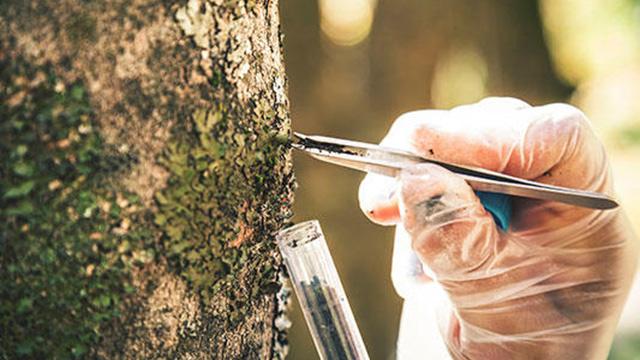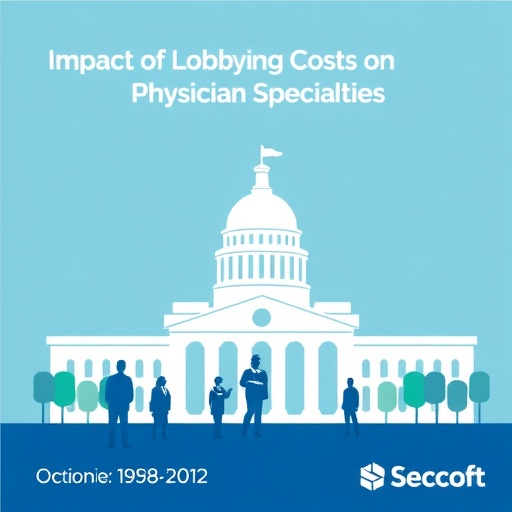‘We’re helping cells figure out how to tolerate chemicals for themselves’

Credit: National Cancer Institute
Much of common pharmaceutical development today is the product of laborious cycles of tweaking and optimization. In each drug, a carefully concocted formula of natural and synthetic enzymes and ingredients works together to catalyze a desired reaction. But in early development, much of the process is spent determining what quantities of each enzyme to use to ensure a reaction occurs at a specific speed.
New collaborative research from Northwestern University could expedite, or even eliminate, the need for scientists to manually adjust bioproduction reaction conditions at all. Using ideas conceived by graduate students across three labs, Northwestern researchers developed technology that allows microbes to produce drugs with feedback control systems, dialing down or amping up protein concentration as needed.
Implications for this research are vast. With the knowledge that microbial feedback control systems could be used more generally to produce other drugs and products, the ability for microbes to be self-regulating means other important classes of therapeutics may be newly accessible to developers.
Currently, because production pathways can be toxic to cells at certain levels, scientists have faced hurdles to engineering such microbes that leverage these pathways. But with the help of tools from the lab of Julius B. Lucks, an associate professor at the McCormick School of Engineering, this barrier may soon be nil.
“We first demonstrated our concept by making the precursor of the anti-cancer drug taxol,” said Lucks, a corresponding author on the paper. “This was a great model target to try because there’s challenges and complicated chemistry, but we hope the technology we developed is general in a sense, and there’s a whole array of products where you’d prefer to have microbial production.”
The research was published earlier this month in the journal ACS Synthetic Biology.
Synthetic biology has been a growing field over the past several decades and has entered the public sphere with the popularization of CRSPR genome editing and development of COVID-19 vaccinations with the use of engineered RNA molecules. Now in its fifth year, the Center for Synthetic Biology at Northwestern houses professors and students across majors and schools. Lucks said the center operates unlike others he’s been a part of because “it’s not top-down”; students are empowered to do awesome stuff.
In fact, the recently published research was formulated at a 2016 conference that two graduate students from different labs affiliated with the Center happened to attend. Cameron Glasscock, now a postdoctoral researcher at the University of Washington, was then working toward his Ph.D. in the Lucks lab. He remembers having an idea that he could use switches to enhance the microbial production of important drug compounds. When he met Bradley Biggs, a graduate student from associate engineering professor Keith Tyo’s lab, in a seminar at the conference, they spent the rest of the day conspiring in the back of the room. By the end of the day, the two had an idea.
“Cameron and I knew there wasn’t a high cost to trying, even if we failed,” said Biggs, an author on the paper. “Ultimately, the process was easy since our labs don’t really have any barriers to collaboration.”
The students worked behind the scenes with undergraduate researchers to gather preliminary data that would ultimately help shape their grant proposal, then presented the data to Lucks. Excited, Lucks immediately contacted Tyo and Danielle Tullman-Ercek, an associate professor of chemical and biological engineering in McCormick, to start collaborating on a new project.
“This was one of my more formative experiences in grad school because we were writing the first draft of pretty much everything,” Glasscock said.
Creating a control switch for drug precursors
Interest in fine-tuning gene expression to improve system performance is a long-standing goal for synthetic biologists. Perfecting a mechanism to do so has applications ranging from chemical synthesis to advanced diagnostics and therapeutics, but scientists are limited by the burden and stress that these systems place on host cells.
The paper proposes a new regulatory motif called a switchable feedback promoter (SFP) that uses feedback response to control the timing and overall magnitude of reactions. SFPs are a promising route to achieving dynamic control of pathways because they react to stress and mitigate damage to the host cell.
After the lab’s success making the precursor to taxol, a chemotherapy drug that takes 80 years to harvest from grown yew trees, the study goes on to replicate its results by making amorphadiene, a natural product involved in the synthesis of the antimalarial drug artemisinin. The researchers found by introducing microbial production into pathways, they were effectively able to inhibit or improve production of desired chemicals.
“There’s a huge interest in taking this ability of microbes to make products sustainable, sustainably,” Lucks said. “People can brew beer at large volumes. What if you could brew clothes? Or fuel? And sneakers? And you could do that sustainably and without petrochemicals.”
This is where support from the lab of Tyo, also a corresponding author on the study, came in. His interest in sustainability allowed the team to apply long-term goals about the product cycle to the research. He hopes with the technology developed, he’ll be able to use it in much more sophisticated contexts to turn waste from feedstock into chemicals.
For now, the researchers are hoping to help other companies and teams use the tech themselves to solve new problems and help advance questions of their own.
“If the Lucks lab was that hammer – with tools and the desire to solve this problem – my lab and Tullman-Ercek’s labs were the nail – with our interest in sustainable production of chemicals using cells,” Tyo said. “Now, there are more nails popping up that we aren’t quite sure how to solve yet.”
###
Media Contact
Lila Reynolds
[email protected]
Original Source
https:/
Related Journal Article
http://dx.




